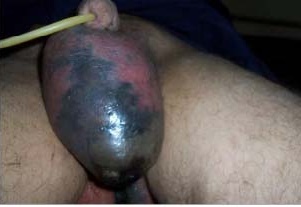Objectives: Fournier’s gangrene is a rare but serious necrotizing infection of the skin and subcutaneous tissues affecting mainly the genital, perineal and perianal regions with poor outcome. Multidisciplinary approach ensures the best management with the mainstay of treatment is the repeated adequate surgical debridement. Broad spectrum antibiotics and hemodynamic support, if needed, are also crucial. Plastic surgery is concerned with reconstruction of the residual defect after control of the infection and stabilization of the patient’s condition. Methods: we present 14 patients with Fournier’s gangrene in the period between July 2009 and August 2015. Those patients were evaluated and managed based on onset, severity of the problem, presence of predisposing factors, site and size of residual defects. Results: Mean age of patients was 47.8 years, male to female ratio was 2.5:1, diabetes mellitus was the commonest predisposing factor, and the scrotum was most frequently involved site. No mortality has been recorded. Conclusion: Fournier’s gangrene is no longer a life threatening condition. It is best treated by early and repeated debridement under broad-spectrum antibiotic cover. Reconstruction markedly reduces financial and psychological stress of patients as well as hospital stay and accelerates early return to normal life.


